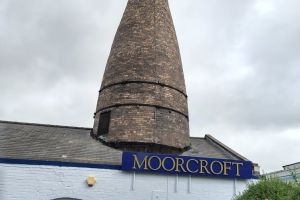Special Report: The M6 Toll – still unproven after ten years

TODAY marks the tenth anniversary of the opening of the M6 Toll. TheBusinessDesk.com’s deputy editor Duncan Tift has followed the development of the project from its inception and now looks back on its controversial life.
At this time of the year I’m normally in reflective mood as it marks an important personal landmark – the beginning of my journalistic career. This year – for those interested – I notch up the quarter century.
During this time I’ve covered many, many stories. Some happy, some sad – some so heartbreakingly tragic that this platform couldn’t begin to do them justice.
There are very few stories throughout this epic span that are still active but one is – and like myself, it is enjoying a notable landmark.
For today marks the tenth anniversary of the opening of one of the region’s – indeed the nation’s – most significant infrastructure projects. I refer to the M6 Toll, the first – and still the only – pay to drive motorway in British history.
However, my association with the scheme stretches way back beyond this significant anniversary.
I remember that one of my first jobs as a cub reporter way back in 1988 was to be dispatched to Lichfield Guildhall to sit through a then baffling public inquiry into a new motorway scheme, dubbed the Birmingham Northern Relief Road.
The Department of Transport, fearful of increasing traffic growth on the M6 through Birmingham, believed an alternative needed to be found to the escalating levels of congestion which daily blighted this important arterial route.
It proposed a series of routes – all different colours – for the first stage of what was then envisaged as an M25-style ring road around the West Midland conurbation.
The ultimate plan was for the BNRR to link up with the M42 and then eventually a second project – dubbed the Western Orbital Route – to encircle the existing motorway and free capacity on the route through Birmingham.
This seemed to make sense at the time. Although for a green reporter talk of compulsory purchase orders, planning blight and traffic flows may as well have been in a foreign language for all the sense it made.
However, after many a late night protest meeting (including one where I first heard the term “NIMBY”) and interviews with planning officers the mist gradually began to clear.
Suffice to say I spent the next 15 years chronicling the development of the scheme as it was batted backwards and forwards by different political regimes until a Conservative Government decided to move the goalposts by making the project a tolled motorway – one of those confounded continental schemes where you have to throw coins into a big receptacle in order to ensure your onward journey.
Move on two lengthy public inquiries later and the scheme finally receives planning consent.
The operator is appointed – a weird Italian-Australian collaboration – and then the marketing men move in.
“Fast, effective relief” from the daily congestion which clogs the M6 is the slick message displayed on billboards around the region – none more prominent than the massive wrap-around which covers the glorious Fort Dunlop building and which looks as though it could be visible from the Moon.
After making a nuisance of myself to the various PR companies saddled with the dubious task of promoting the scheme – when will the road open I ask. Apparently I raised the question so many times that I was blacklisted somewhere – good to know I was doing something right!
I’m told off the record that the date has been set – December 8, 2003 will see then Transport Secretary Alistair Darling dispatched to Staffordshire complete with ribbon and big scissors for the ceremony.
After 15 years I’m sceptical and my cynicism is justified because right at the last minute I’m told the scheme has been pushed back 24 hours.
Why? Well I blame Jonny Wilkinson.
In late November 2003, England is still basking in the glow on sporting greatness – its rugby team are world champions and so it’s decided to recognise this with an Ashes-style salute to the victorious team with a parade through the streets of London and a celebration in Trafalgar Square.
So, rather than have these rugby johnnies hogging the limelight on what should have been the M6 Toll’s shining moment, it’s decided to delay the opening ceremony, although nobody will confirm this to me officially.
So on a cold and miserable Tuesday morning I make my way to the toll station at Shenstone where the opening ceremony is to take place. I’ve prepped good contact, Hednesford-based property developer Fred Pritchard and he arranges for four of his precious collection of Aston Martin sports cars to form the patriotic vanguard and become the first vehicles to travel along the route and in doing so, enter the history books as the motorway’s first paying customers (a fact rewarded by the aforesaid ribbon and scissors).
A pre-Chancellor Darling is fulsome in his praise for the route – an odd thing for a Labour Cabinet Minister to do you might think – but then Tony Blair’s Government was not typical in that respect and had already committed armed forces to something far more unpopular than having to pay to travel along 27-miles of pristine tarmac.
When I look back now there was a lot of optimism and the air was filled with talk of a new era and a network of pay-to-drive routes.
A decade on and the dream can be said to have died.
The motorway has nowhere near lived up to expectations – traffic flows remain a fraction of what was originally envisaged and congestion continues to plague the M6 on a daily basis – a fact illustrated by the current Government’s decision to abandon new motorways (even private ones) in favour of widening existing routes.
So what verdict does history deliver on the M6 Toll – a white elephant? Well, if success is judged by traffic volumes then yes. Averages of 40,000 vehicles a day are almost half what was originally claimed are poor and Australian bank Macquarie has to hope that the 52-year operational franchise will eventually yield a return on its £900m outlay.
I’m just thankful I’m not an investor.
However, setting aside the fact that an already heavily taxed motorist does not want to be further out-of-pocket by using a route which will at best, only produce a minor time saving on their journey, the motorway has produced some positives.
The main one being the growth corridor which has developed along its route. This has produced welcome investment to Staffordshire – money which might otherwise have been lost to the area.
I still believe the idea of a relief road is the right one – despite the widespread opposition (and believe I’ve spoken to enough people on both sides of the argument over the years).
History may ultimately judge it harshly but I’m hoping I’m still here to see the road’s silver jubilee and find out what the verdict is then.
Whatever your thoughts, maybe now is the time to raise a glass to a project which while not changing the course of Britain’s transport economy has undoubtedly had a bearing on its culture.






